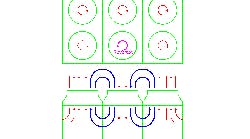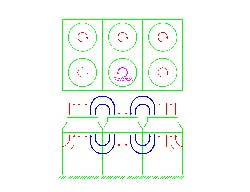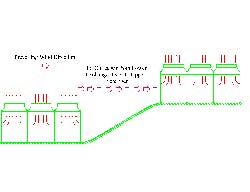You never forget when and where you learned some things. For instance, I’ll always remember an experience at a plant that used a large air-fin exchanger to condense vapors. The air-fin exchanger had three bays, each with two induced-draft fans. Everything had worked well for more than 20 years. However, after one summer shutdown for plant maintenance, the unit was restarted and only reached roughly 75% of its previous capacity.
The plant support engineer did extensive data analysis from the process control computer but never could isolate a likely cause of the problem. As summer turned into autumn, performance improved somewhat and the problem dropped down on the list of priority fixes.
As the weather got colder, one of the unit operators noticed that it seemed to be a lot warmer than usual under the air-fin exchanger. Investigation showed that one of the air-fin fans’ three-phase motors — a new motor installed during the summer turnaround — had two electrical connections switched. So, instead of all the fans drawing air up and through the air fin, one fan was rotating backwards, pushing air back down through the air fin. The reversed fan rotational direction set up air circulation loops (Figure 1).
Figure 1 -- Inefficient air-fin exchanger:
Switched electrical connections led to
reversed fan rotation and improper air
circulation.
Click on illustration for a larger image.
This was an unforgettable introduction to three-phase motor rotation and the impact of switched electrical connections. Maintenance and operating procedures should require a rotational direction check after any motor replacement or maintenance, to prevent such mistakes.
Switching electrical connections on a motor can be a useful technique in rare cases when, for instance, you need to run mixers, agitators, fans or even propeller pumps backward. But make the switch deliberately, not by accident.
This example also teaches another important lesson about what troubleshooting really requires. Looking at the computer in the office won’t suffice. Putting together graphs of trends of recorded values from the unit isn’t troubleshooting. At best, you’ll get some pretty pictures that might give you some clues about where to look.
You must inspect the unit — going out into the field to verify operation and see how the equipment is configured. Applying engineering fundamentals and experience to field observation solves plant problems. Sitting in the office theorizing doesn’t.
Figure 2 -- Elevation issue: Hot air
from distant lower exchanger degraded
performance of higher exchanger.
Click on illustration for a larger image.
Another air-fin exchanger example underscores the importance of field work. A natural-gas processing complex used multiple air fins for heat rejection. Two large units ended up at different elevations. Even though the distance between the units exceeded 100 yards, the prevailing wind direction and velocity pushed large quantities of hot air from the lower exchanger to the upper exchanger (Figure 2). So, the upper exchanger’s service suffered from severe capacity limits. The centralized support office, despite extensive efforts, couldn’t find the source of this problem. A relatively short plant visit quickly identified it. Some straightforward windbreaks along the ground between the two exchangers significantly reduced the amount of hot air forced into the second exchanger.
Field observation and application of fundamentals are key to solving many “inexplicable” plant problems. Get out into the field, talk to the operators, verify the unit configuration and gain the experience to be able to say “that doesn’t look right” when you see something new. Engineering is about building things that work and keeping them working, not about calculating things that should work.
Andrew Sloley is a contributing editor to Chemical Processing. You can e-mail him at [email protected].




